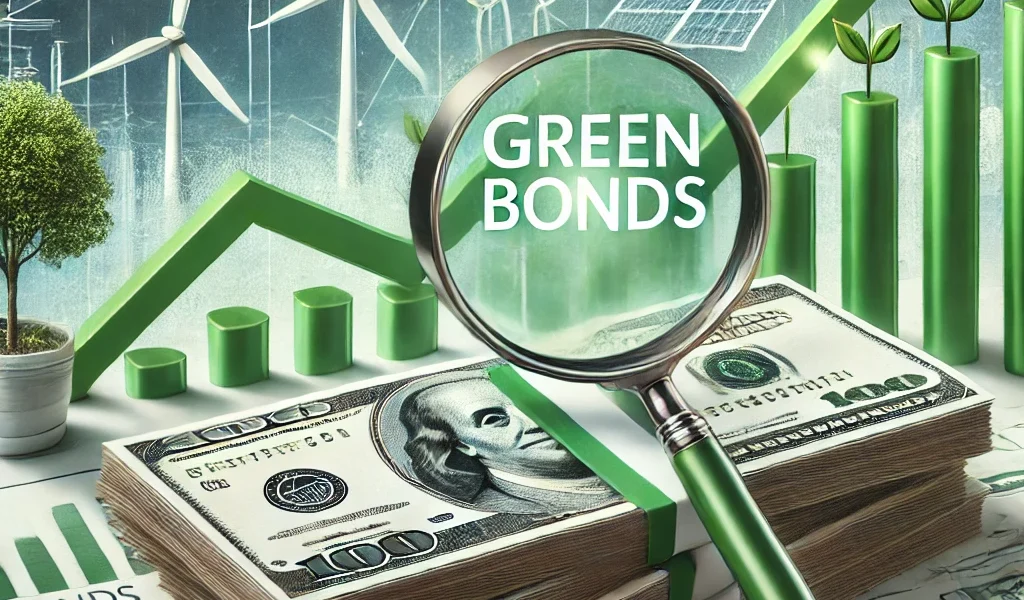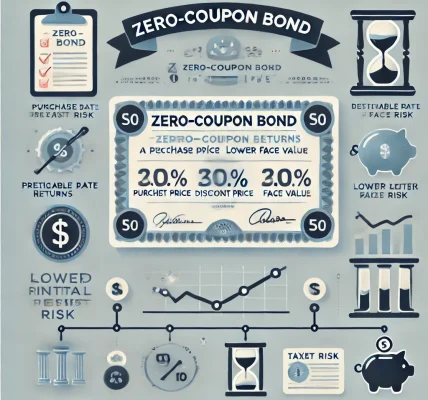Introduction
As the world shifts towards sustainable development and environmental responsibility, investors are increasingly looking for opportunities that align with their values. Green bonds have emerged as a powerful financial tool that enables investors to support eco-friendly projects while earning returns. These bonds are designed to fund initiatives such as renewable energy, energy efficiency, clean transportation, and climate resilience.
In this comprehensive guide, we will explore what green bonds are, how they work, their benefits and risks, and why they are essential for a sustainable future.
What Are Green Bonds?
Green bonds are fixed-income securities issued to finance environmentally friendly projects. They function similarly to traditional bonds but come with the added assurance that the funds raised will be used exclusively for projects that have a positive environmental impact.
Key Features of Green Bonds:
- Purpose-Driven: Funds are allocated to environmentally sustainable projects.
- Transparency: Issuers must disclose how proceeds are used and report on the impact.
- Third-Party Verification: Many green bonds are certified by organizations that ensure compliance with environmental standards.
- Government and Corporate Issuers: Green bonds can be issued by governments, financial institutions, and corporations.
How Do Green Bonds Work?
Green bonds function just like traditional bonds. The issuer borrows money from investors with a promise to repay it at a fixed interest rate over a specified period. However, in the case of green bonds, the funds must be directed towards projects that contribute to sustainability and environmental protection.
Steps in Green Bond Issuance:
- Issuance: A government, corporation, or financial institution issues the bond.
- Fund Allocation: The proceeds are allocated to projects that meet green criteria.
- Project Execution: The funded projects are developed and implemented.
- Impact Reporting: The issuer provides regular updates on how the money is being used and the environmental benefits achieved.
Types of Green Bonds
1. Corporate Green Bonds
- Issued by companies to fund eco-friendly projects within their business operations.
2. Government Green Bonds
- Issued by governments to finance large-scale sustainability projects like clean energy and public transport.
3. Supranational Green Bonds
- Issued by entities like the World Bank or European Investment Bank to fund international environmental initiatives.
4. Municipal Green Bonds
- Issued by cities or municipalities to fund local green infrastructure projects.
5. Asset-Backed Green Bonds
- Backed by specific environmental projects or revenue streams.
Benefits of Investing in Green Bonds
1. Environmental Impact
Investors contribute to climate change mitigation, renewable energy development, and sustainability initiatives.
2. Diversification of Investment Portfolio
Green bonds offer an alternative to traditional bonds, allowing investors to spread risk while supporting sustainable initiatives.
3. Stable Returns
Like traditional bonds, green bonds provide fixed interest payments, making them a secure investment option.
4. Government Incentives
Many governments offer tax incentives for green bond investments, making them more attractive to investors.
5. Corporate Social Responsibility (CSR)
Companies that issue green bonds enhance their reputation and attract eco-conscious investors.
Risks of Green Bonds
1. Greenwashing Risk
- Some issuers may label bonds as “green” without genuinely supporting environmental projects. Investors should look for third-party certifications.
2. Lower Yields Compared to Conventional Bonds
- Due to high demand and tax benefits, green bonds may offer slightly lower yields.
3. Lack of Standardization
- Different green bond frameworks exist, making it difficult to compare investments across markets.
4. Limited Availability
- The market for green bonds is growing but remains smaller than traditional bonds, limiting options for investors.
How to Invest in Green Bonds
1. Direct Investment
- Investors can buy green bonds directly from issuers, including governments and corporations.
2. Exchange-Traded Funds (ETFs) and Mutual Funds
- Green bond ETFs and mutual funds provide diversified exposure to multiple green bonds.
3. Green Bond Indices
- Some financial institutions track green bond indices that investors can use to gauge market trends.
4. Financial Institutions and Brokers
- Banks and investment platforms offer opportunities to purchase green bonds in the primary and secondary markets.
Green Bonds vs. Traditional Bonds
| Feature | Green Bonds | Traditional Bonds |
|---|---|---|
| Purpose | Funds environmentally friendly projects | General funding purposes |
| Transparency | High (Impact reports required) | Low (No sustainability reporting) |
| Market Size | Growing rapidly | Established, larger market |
| Tax Incentives | Often available | Rare |
| Investor Appeal | Attracts ESG-focused investors | Appeals to all investors |
The Future of Green Bonds
As climate change concerns intensify, the demand for green bonds is expected to rise. Governments and financial institutions are increasingly incorporating Environmental, Social, and Governance (ESG) criteria into their investment strategies. The global green bond market is projected to expand significantly, with more countries and corporations issuing these bonds to finance sustainability initiatives.
Key trends shaping the future of green bonds include:
- Stronger Regulations: Governments and financial institutions are setting clearer guidelines for green bonds to prevent greenwashing.
- Increased Participation: More investors are prioritizing sustainable investments, driving demand for green bonds.
- Emerging Market Growth: Developing nations are adopting green bonds to fund climate-resilient infrastructure projects.
- Integration with Digital Finance: Blockchain technology is being explored to enhance transparency and traceability in green bond issuance.
Conclusion
Green bonds represent a unique investment opportunity for those looking to generate financial returns while supporting environmental sustainability. By financing projects related to renewable energy, clean transportation, and climate resilience, green bonds contribute to a greener, more sustainable future.
While risks like greenwashing and lower yields exist, investors can mitigate them by conducting due diligence and investing in verified green bonds. As sustainability continues to drive global investment trends, green bonds are set to play a crucial role in shaping the future of responsible investing.




